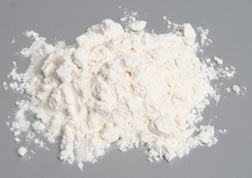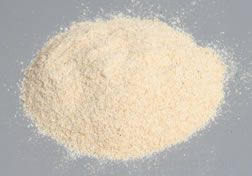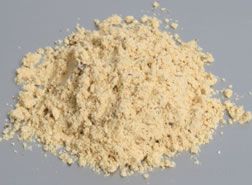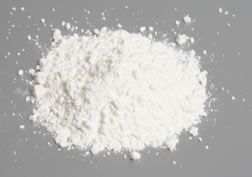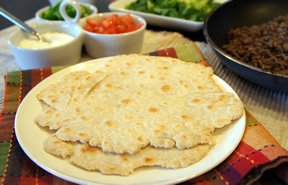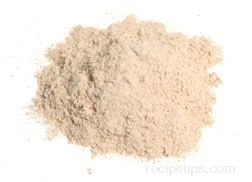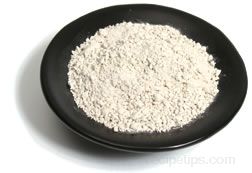Corn | Rice | Rye | Other Grains
Types of Flour Ground from Corn
Several varieties of corn are used to produce different types of corn flour. The degree in which the corn is milled and processed also determines the type of flour that is produced.
Atole Flour
Atole flour is a variety of cornmeal made from dried or roasted blue corn. It is gluten free and it is often cooked and served as a breakfast dish similar to oatmeal. In this form it is also known as "harina para atole." Atole flour is also a common ingredient in puddings, desserts, a variety of flat breads served throughout Mexico, as well as atole, which is a popular Mexican drink. Atole flour is also known as blue atole flour.
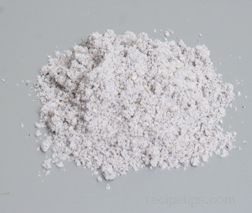
Blue Cornmeal
Blue cornmeal is a variety of cornmeal made from blue corn. A roasted version is known as "blue atole flour." Blue cornmeal has more protein than other types of cornmeal and baked goods take on a purple coloration when it is used. It is often used in a number of Mexican and Southwestern dishes.

Corn Flour
A type of flour milled from dried kernels of yellow corn. It is similar to cornmeal except that it is ground to a finer consistency than cornmeal. It is used to make cornbread, muffins, pancakes, polenta, and tortillas. Corn flour is very useful for gluten-free quick breads. Because corn flour contains no gluten, it must be blended with wheat flour when preparing yeasted breads.
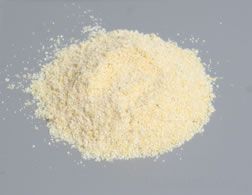
Cornmeal
Cornmeal is a flour-like substance that has larger granules than regular flour and is produced from grinding dried kernels of yellow or blue corn. Yellow or blue cornmeal can also be ground to a finer consistency and sold as gluten free flour that is used to make cornbread, muffins, pancakes, polenta, and tortillas. Cornmeal is very useful for gluten-free quick breads. Baked goods have a course, gritty texture with a granular crumb and a flavor of sweet corn. Freshly ground cornmeal is best, especially if it is stoneground, because it has more flavor than cornmeal that has been ground using other methods. Because cornmeal contains no gluten, it must be blended with wheat flour in order to form a bread loaf.
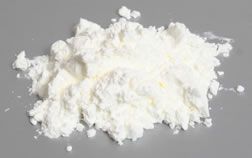
Cornstarch
Cornstarch is obtained from the white heart of the corn kernel. Cornstarch is a tasteless, very fine powder that is very useful as a thickener, having double the thickening properties of regular flour. It is widely used for thickening sauces, gravies, and puddings. It is best to stir it into water first before it is added to other foods, so that it can be more easily incorporated without creating lumps. In England, cornstarch is referred to as corn flour or cornflour, while in the United States corn flour refers to whole corn kernels that have been finely ground.
Harinilla
Harinilla is a variety of flour made from blue corn. It is often used for a number of Mexican dishes including tortillas, tamales, and dumplings. The blue corn is treated with a lime solution, which expands the kernel, allowing it to be removed from the hull. If harinilla is not available, blue cornmeal can be substituted, but it should be milled in a food processor to produce a flourlike consistency. Harinilla is also known as "blue corn flour" and when it is used for preparing tortillas, it is called "Harina Azul."
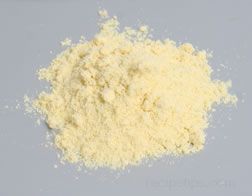
Masa Harina
Masa harina is flour that is ground from dried hominy. White or yellow corn is used for making hominy, which is also known as "posole" or "pozole." The corn is boiled in a solution containing powdered lime and is then washed, dried, and ground to form the masa harina. It is used in preparing corn tamales and tortillas. Blue corn is used to make harinilla and is not used for masa harina.
Types of Flour Ground from Rice
Rice flour is produced from uncooked rice that has been ground into a powder ranging from course to very fine. Rice ground to a course texture is often used in baked items such as cookies and cakes. Rice that has been finely ground has the consistency of cornstarch and is often used in many of the same ways as cornstarch, such as a thickener for sauces and puddings. Depending on the variety and texture of the rice flour used in a recipe, the consistency of the resulting foods may range from very light and soft to somewhat gritty in texture. Several test recipes may be required before the best results can be achieved.
Standard rice flour is available in brown or white varieties. Brown rice flour is produced from the entire rice kernel, excluding the outer husk, while white rice flour is produced from grinding polished rice (the bran and germ have been removed). The color of brown rice flour is actually only a shade darker than white rice flour, but its texture is less smooth. For most recipes, both types of rice flour may be used interchangeably. Rice flour can be used successfully in some baked goods, such as cakes, cookies, and dumplings, but because it contains no gluten, it is not suitable for baking yeast breads. It can be combined with wheat flour for bread making, but the resulting loaf is rather crumbly. Rice flour is very popular for preparing a variety of Asian noodles. Rice flour is sometimes referred to as rice powder or rice starch.
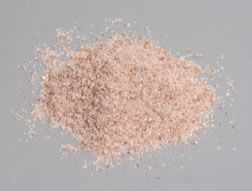
Brown Rice Flour
Brown rice flour is a type of flour made from rice kernels that have been processed to remove the outer hulls, but not the nutritious bran layers covering the kernel. When the kernels are ground into flour, the resulting color is only a shade darker than flour milled from polished rice and the texture is not quite as smooth. For most recipes, both brown and white rice flour may be used interchangeably, but brown rice has a nuttier flavor. When used in baked goods, such as cakes and cookies, brown rice flour provides a grainy texture with a fine, dry crumb. Brown rice flour is gluten free so it is not suitable for baking yeast breads, but it can be combined with wheat flour for this purpose.
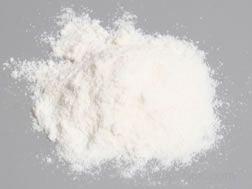
Mochiko Flour
Mochiko flour is milled from mochi rice, which is a short-grained, glutinous rice common in Asia. It is often used to thicken sauces and food mixes, providing a strong bonding that can withstand refrigerator and freezer temperatures without separating. It is often used for breading foods prior to frying and for making traditional foods that require flour, such as desserts and baked goods, or rice dumplings referred to as Japanese mochi. Mochiko flour is also known as sweet glutinous rice flour, sweet rice flour, or mochi flour.
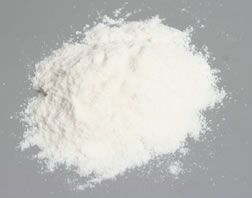
White Rice Flour
White rice flour is a type of flour produced from grinding polished rice (the bran and germ have been removed) into a powder. White rice flour can be used as a thickening agent for sauces and puddings. It is also very popular for the preparation of a variety of Asian noodles. It is used in some baked goods, such as cakes, cookies, and dumplings, but because the flour contains no gluten, it is not suitable for baking yeast breads. It must be combined with wheat flour in order to attain the properties of gluten formation necessary for yeast dough to properly rise.
Types of Flour Ground from Rye
Rye flour is produced from grinding the grains of rye into a powder. Like most other types of flour produced from grains, rye flour may be ground into varying degrees of fineness ranging from course to very fine. It also is available in light, medium, and dark varieties according to the quantity of bran included in the flour.
Rye flour has a slightly sweet-sour flavor and it is among the most popular types of flour used in baked goods in northern and eastern European countries where wheat does not grow well. The type of protein necessary for gluten formation is lower in rye than wheat, but it is higher than in most other grains. Rye flour is often combined with wheat flour when baking risen breads.
Light Rye Flour
During the milling process, the bran is removed from the rye to produce light rye flour, which is a lightly colored and very starchy version of rye flour. It is often used for making crusty black breads.
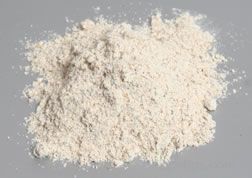
Medium Rye Flour
Medium rye flour contains some bran, but not as much as darker versions of rye flour. It is widely used in a variety of rye breads and other baked goods.
Dark Rye Flour
Dark rye flour is produced from the whole grain minus the husk. The bran and the germ are retained, which are full of nutrients. Dark rye flour is often used for making dense pumpernickel bread, as is rye meal, which is a coarser grind of the bran-rich whole grain.
Types of Non-Wheat Flour Ground from Other Grains

Barley Flour
Barley flour is usually produced from "pearled" barley, which refers to barley that has been scoured and polished to remove the husk and the bran. After the malting process has removed the sugar and starch, the remaining barley (known as malted barley flour), is steam dried, milled, and sifted to provide the finished flour product.
Although barley flour does contain some gluten (a protein that assists in making dough rise), it does not contain enough for dough to effectively rise, so gluten-rich flour, such as wheat flour, is often added to the barley flour when preparing yeast breads. Baked goods, such as breads, made only of barley flour are overly moist and the texture is similar to dense cake. Barley flour also works well as an ingredient to thicken gravies, sauces, and stews.
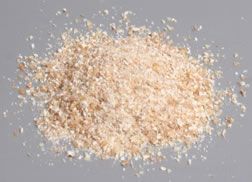
Farro Flour
Most people consider farro to be a type of wheat and although they are related, farro is of a different species. Farro is an ancient Italian grain that is similar in taste to barley. In the United States, farro is known as a type of spelt or wheat. It is popular in Europe where it is often ground into flour and is used for polenta and bread recipes.
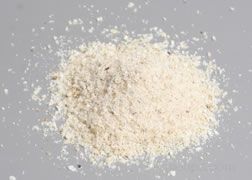
Job's Tears
Job's Tears is tall cereal grass cultivated in Asia and Africa, but rarely found in the Western world. The grain is named "Job's Tears" because its shape is similar to a teardrop. When the hull is removed and the grain is polished, it resembles polished barley and it is often considered a form of barley. The grain can then be ground into flour.

Kamut® Flour
Kamut flour is milled from Kamut grain, which is a brand name for a grain that is closely related to durum wheat and is often considered a specialty grain. Kamut wheat is often ground, packaged, and sold as flour. Kamut flour contains gluten so it can be used to produce risen breads.
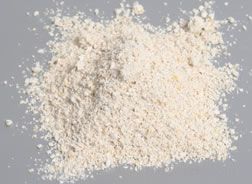
Oat Flour
Oat flour is produced from hulled and cleaned oats, called groats. It is also ground from rolled oats or oatmeal. Oat flour adds texture and a rich nutlike flavor to breads and other baked goods. Using oat flour results in baked items that are moist and more crumbly and they retain their freshness longer than items baked with wheat flour. Oat flour must be combined with wheat flour to produce leavened bread.
Seven-Grain Flour
Seven-grain flour is a commercially blended flour mixture of seven ground grains consisting of wheat, rye, corn, oats, barley, millet, and flax (or triticale). It is available in health-food stores and some large food stores.
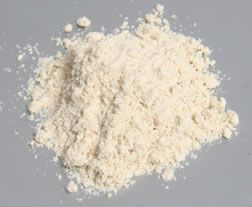
Sorghum Flour
Sorghum, which has a sweet, nutty flavor, is often milled into flour, but it lacks gluten, so it isn't suitable for making yeast breads. In India, the flour is used for chapatis, which are a type of popular unleavened flatbread. Sorghum flour is also popular in many African nations where it is a staple food source. In the United States, most of the sorghum is used for animal fodder and syrup production with very little of the grain used for flour production.
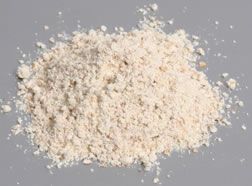
Spelt Flour
Spelt is an ancient cereal grain related to modern wheat. It is often ground, packaged, and sold as flour. It was very popular in the United States at the end of the 19th Century, but it lost favor when other high-yield forms of wheat were developed. Spelt flour is still very popular in many European countries where it is used for whole grain bread recipes, pasta, and polenta. Spelt contains gluten, which is necessary for bread to rise properly.
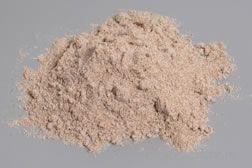
Teff Flour
In Ethiopia, where most of the teff is grown, teff flour is a staple food product. The teff grain is so small that nearly 150 are equivalent to the weight of one grain of wheat. Teff is difficult to find in great quantities anywhere else in the world. Flour milled from white teff has a milder flavor than flour ground from red or brown types. In Ethiopia, Teff flour is most often used for a thin, very sour flatbread called injera.
Triticale Flour
Triticale is a high protein man-made grain produced by crossbreeding wheat and rye. Pronounced "trit-i-KAY-lee," the name is a combination of the Latin botanical names of wheat and rye - "triti," referring to triticum for wheat and "cale," referring to secale for rye. Triticale is often ground, packaged, and sold as flour. It doesn't taste like rye, but it has a stronger, nuttier flavor than wheat. It is a delicious ingredient for breads and other baked goods. Triticale contains gluten, which is necessary for bread to rise properly.





